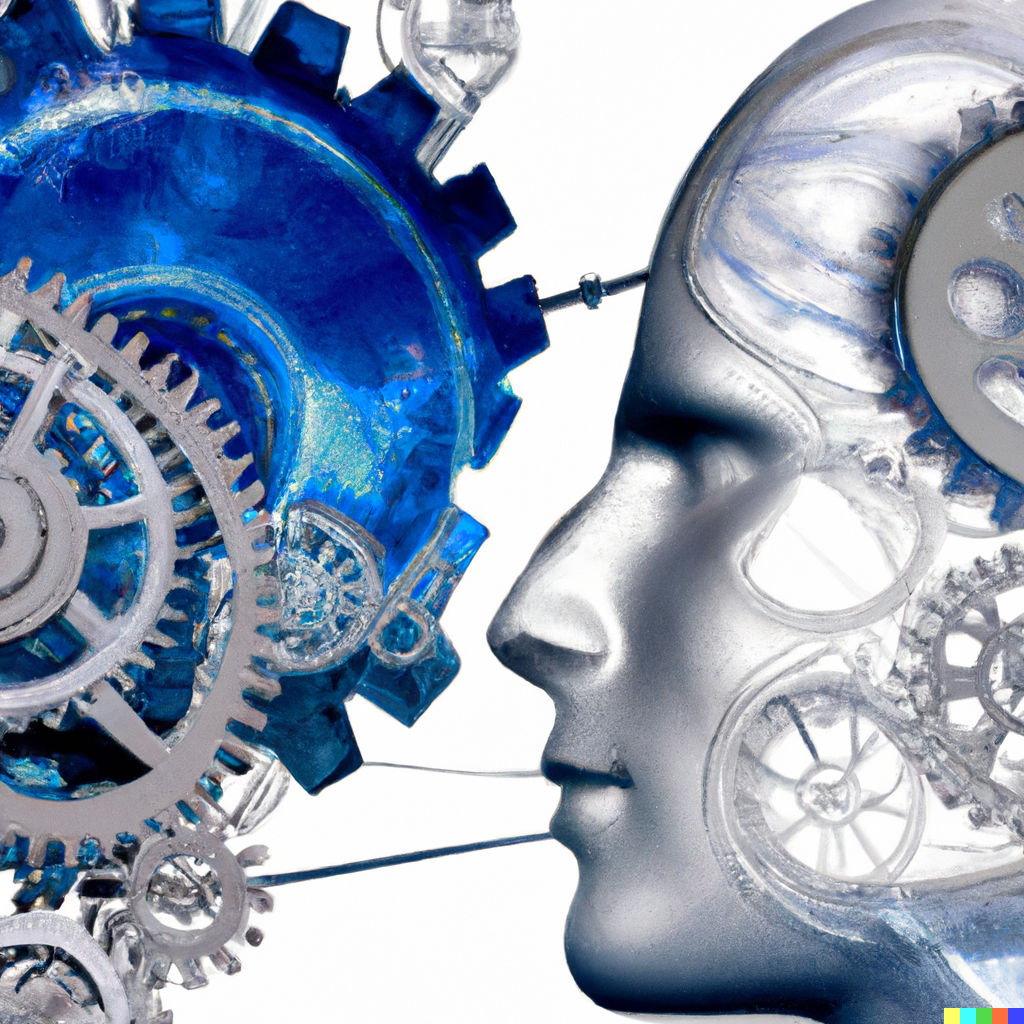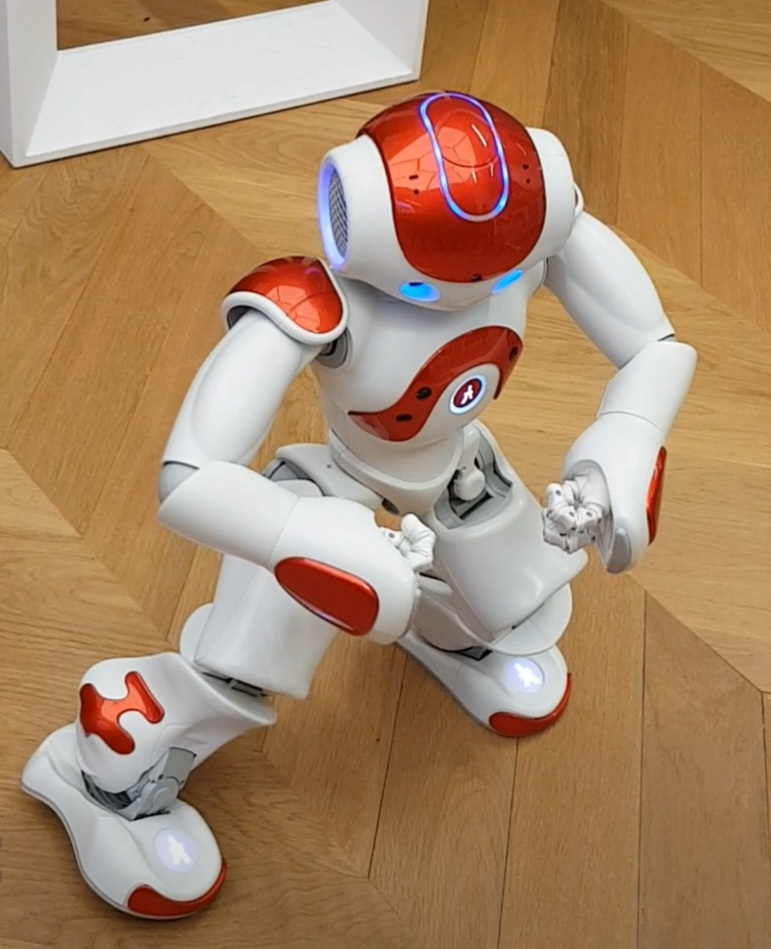In today’s rapidly evolving digital landscape, terms like RPA, AI, API, and Big Data are tossed around frequently, often leaving beginners feeling lost and overwhelmed. This guide aims to demystify these concepts, offering clear explanations and relatable illustrations to help you grasp their meaning and significance.
For the creation and content of this post on tech jargon, I utilized ChatGPT by OpenAI, recognized as one of the best conversational AIs on the market. The illustrations accompanying this piece were crafted with the assistance of DALL-E, OpenAI’s advanced image generation model.
- Embracing Technology: Understanding Tech Jargon Without Fear
- ChatGPT by OpenAI
- DALL-E by OpenAI
- Artificial Intelligence (AI)
- Machine Learning (ML)
- Robotic Process Automation (RPA)
- Application Programming Interface (API)
- Deep Learning (DL)
- Neural Networks
- Natural Language Processing (NLP)
- Data Mining
- Big Data
- Blockchain
- Internet of Things (IoT)
- Augmented Reality (AR) & Virtual Reality (VR)
- Edge Computing
- Quantum Computing
Embracing Technology: Understanding Tech Jargon Without Fear
In an age where technological advancements seem to be at the forefront of almost every conversation, it’s natural for many to feel overwhelmed or even apprehensive about the future. There’s often talk about machines replacing human roles, leaving many to wonder about their place in this rapidly changing landscape.
However, it’s essential to understand that technology, at its core, is a tool designed to aid humanity, not replace it. While new terminologies and concepts might seem daunting, they’re simply new languages of innovation that we can all learn. By demystifying tech jargon, we not only empower ourselves with knowledge but also see the myriad of ways technology seeks to make our lives more efficient and interconnected.
Remember, every great technological revolution in history, from the printing press to the internet, was met with uncertainty. But with understanding and adaptation, we’ve always harnessed their potential to create a brighter future.
ChatGPT by OpenAI
ChatGPT belongs to the category of Artificial Intelligence (AI). More specifically, it’s built using Machine Learning (ML) techniques, particularly a type of ML called deep learning. The model behind ChatGPT, known as GPT (Generative Pre-trained Transformer), is a type of deep neural network. So, while all instances of Machine Learning (like GPT) are a subset of AI, not all AI systems use machine learning. ChatGPT does.
ChatGPT is a state-of-the-art language model developed by OpenAI. Built upon the GPT architecture, ChatGPT is designed to understand and generate human-like text based on the input it receives. With its vast knowledge base, ChatGPT can answer a wide array of questions, assist in various tasks, and engage in detailed conversations. Harnessing the power of machine learning, ChatGPT continuously improves its responses by learning from vast amounts of text data.””It represents a significant stride in the field of artificial intelligence, bridging the gap between machines and human conversation.
ChatGPT doesn’t “take” from specific sources in real-time or access external databases or websites directly. Instead, this AI was trained on a mixture of licensed data, data created by human trainers, and publicly available data in multiple languages. This corpus was used to pre-train it on a range of language tasks, such as language modeling, text completion, and text classification. ChatGPT then fine-tuned on narrower datasets generated with the help of human reviewers.
With ChatGPT, users can converse in a wide range of languages. While English is the primary language and offers the highest level of accuracy and coherence, the model also supports conversations in French, Spanish, German, Chinese, Russian, and many other languages, albeit with varying degrees of proficiency.
OpenAI, the organization behind ChatGPT, has not publicly disclosed the specifics of the individual datasets used, including whether any specific data source was used. When ChatGPT provide information, it’s based on patterns in the data AI was trained on. Always verify critical information through direct or primary sources before making decisions based on it.
Just as humans are prone to errors, ChatGPT AI can also make mistakes, being a product of the data it’s trained on and the algorithms that drive it.
I will make a dedicated post on ChatGPT.
Link to ChatGPT: https://chat.openai.com/
DALL-E by OpenAI
DALL·E is a variant of the GPT-3 model by OpenAI, specifically designed to generate images from textual descriptions. Instead of producing text, DALL·E creates visual content, showcasing the potential of neural networks in the realm of image generation.. DALL·E’s ability to craft unique and often surreal images from simple textual prompts has garnered significant attention in the AI community.
You have 15 free credits per month using DALL-E.
Link to DALL-E 2: https://openai.com/dall-e-2
Here is a compilation gallery from the pictures generated by DALL-E based o prompts on technology concepts (AI, robot,…)























Artificial Intelligence (AI)
Definition: AI refers to the capability of machines to perform tasks that usually require human intelligence such as understanding natural language, recognizing patterns, or making decisions.
Illustration: Imagine a robot named “Robbie”. If Robbie can talk to you, understand your feelings, and make decisions based on the context of the conversation, Robbie is demonstrating AI.
Machine Learning (ML)
Definition: ML is a subset of AI. It’s the method we use to “teach” machines by feeding them data and letting them learn patterns or make predictions based on that data.
Illustration: Let’s go back to Robbie. Instead of programming Robbie to know that “a cat is an animal,” we show Robbie thousands of pictures of cats. Over time, Robbie can recognize and identify a cat in any new picture. That’s Robbie using Machine Learning.
Robotic Process Automation (RPA)
Definition: RPA involves automating repetitive tasks using software robots. This doesn’t necessarily involve “intelligence”, but it’s about replicating specific, predefined tasks.
Illustration: Imagine you have a digital assistant on your computer named “AutoBot”. Every morning, AutoBot opens your emails, sorts them into folders (work, personal, spam), and marks important ones for you. AutoBot is doing repetitive tasks without “thinking” or “learning” – that’s RPA.
Application Programming Interface (API)
Definition: An API is like a set of rules and protocols that allows different software applications to communicate with each other.
Illustration: Picture two houses. Each house has a mailbox (the API). One house (software A) wants to send a letter (data) to the other house (software B). Instead of physically walking into the other house, they drop the letter in the mailbox, and the other house knows how to retrieve and read it. This mailbox system that allows the two houses to communicate without direct interaction is like an API.
Here’s a more integrated illustration to sum it up for AI, RPA, Machine Leaning and API
Imagine a theme park. The entire park with its different attractions represents Artificial Intelligence. One of the attractions where visitors can try out a simulator that adapts its difficulty based on the visitor’s skill level is the Machine Learning ride. There’s also a small train going on a predefined route that takes visitors from one point to another – this is the RPA train. And all these attractions are built with standard materials and tools which can be used in other theme parks too. The instruction manual that explains how to use these materials and tools is the API.
Deep Learning (DL)
Defnition: A subset of machine learning that uses neural networks with many layers (hence “deep”) to analyze various factors of data. It’s behind many advanced AI functions, including voice and image recognition.
Illustration: Imagine a factory assembly line where each station transforms a product in a small way. The raw material (data) enters, and as it goes through multiple stations (layers of the neural network), it gets transformed and refined, ultimately leading to a finished product (a prediction or classification).
Neural Networks
Definition: Computing systems inspired by the brain’s structure. They consist of layers of nodes (like neurons) and are fundamental to deep learning.
Illustration: Think of a vast interconnected web. Each point on the web (a neuron) can receive, process, and send signals to other points. Just like how our brain processes information, these interconnected points can work together to process data.
Natural Language Processing (NLP)
Definiton: The technology used to help computers understand and respond to human language, enabling functionalities like chatbots.
Illustration: Picture a translator robot. You talk to it in English, and it instantly translates and speaks back in French. This robot understands and processes human language.
Data Mining
Definition: The process of discovering patterns and knowledge from large amounts of data.
Illustration: Imagine a miner digging in a vast land of data with a special tool. Instead of seeking gold, this miner uncovers patterns and trends within the massive landscape of information.
Big Data
Defnition: A field that treats ways to analyze, systematically extract information from, or otherwise deal with data sets that are too large or complex to be dealt with by traditional data-processing software.
Illustration: Visualize a gigantic library, far bigger than any in the real world. Each book contains vast amounts of information. Now, imagine trying to find a specific piece of data in this enormous library—that’s the challenge of big data.
Blockchain
Definition: A system for recording transactions made with cryptocurrencies, but it’s also used for other secure data transaction methods.
Illustration: Think of a digital ledger or a book. Each time a transaction occurs, it gets recorded on a new page (block). Once a page is filled, it’s sealed and linked to the previous one, forming a chain of records that is tamper-evident.
Internet of Things (IoT)
Definition: Refers to the network of physical objects (devices, vehicles, appliances, etc.) embedded with sensors, software, and other technologies to connect and exchange data with other devices and systems.
Illustration: Picture a smart home. The refrigerator, lights, thermostat, and even the toaster are all connected to the internet, communicating with each other and with you through your smartphone.
Augmented Reality (AR) & Virtual Reality (VR)
Definition: AR superimposes digital content on the real world through devices like smartphones or AR glasses, while VR immerses the user in a completely virtual environment, often using a VR headset.
Illustration: For AR, imagine looking through magic glasses that overlay digital information on the real world—like seeing reviews floating above restaurant doors. For VR, think of being inside a video game, where everything around you is a digital creation, and you can interact with the environment.
Edge Computing
Definition: : A distributed computing paradigm that brings computation and data storage closer to the location where it’s needed, aiming to increase response times and save bandwidth.
Illustration: Visualize a city where instead of sending all information to a central headquarters far away (cloud), local offices (edge devices) handle most of the data processing. This ensures faster responses for the city’s inhabitants.
Quantum Computing
Definition: A type of computation that relies on quantum bits or qubits. It promises to revolutionize computing by performing certain tasks much more efficiently than traditional computers.
Illustration: Imagine a magical computer where, instead of flipping traditional switches that are either “on” or “off”, it uses special switches that can be both “on” and “off” at the same time, allowing it to process vast amounts of information simultaneously.

